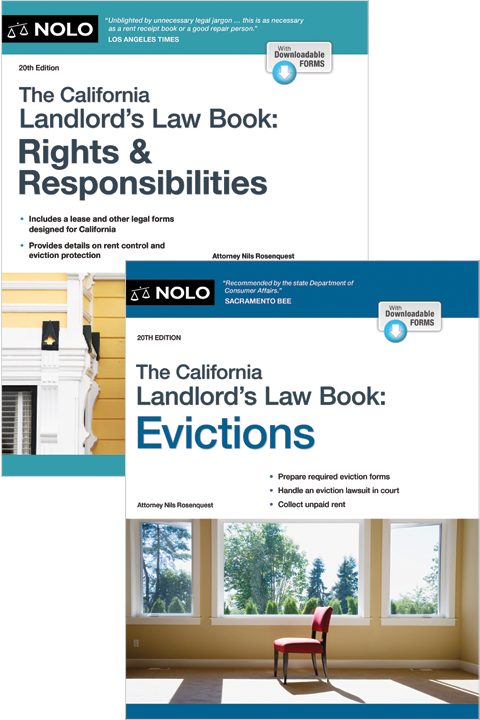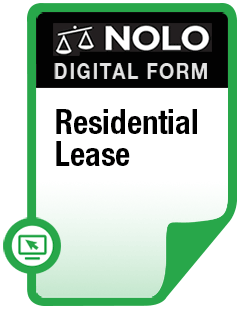Here's what California landlords (and tenants) need to know about mold and the law.
Every landlord should take mold seriously. A top environmental hazard, mold thrives in warm, damp places, and often grows quickly in basements, attics, and other parts of buildings with poor ventilation and humidity problems. Although mold is often associated with buildings in wet climates, no rental property is immune from a mold outbreak, as one can occur following an unattended spill, faulty plumbing, or even a misdirected lawn sprinkler.
If you own or manage a rental property in California, a mold problem could present you with costly cleanup and repair bills as well as lawsuits from tenants claiming that the mold made them ill.
Read on to learn about landlord responsibilities and tenant rights when it comes to mold in California rental properties.
Tenant Self-Help Strategies in California
Regardless of what appears in a written lease with tenants, landlords in California are bound by the implied warranty of habitability, a legal doctrine that requires providing tenants with apartments in livable condition. The presence of mold and the failure to remediate it might qualify as a breach of this implied warranty.
Courts in California have recognized two common legal self-help strategies that some tenants choose to pursue following a mold outbreak in their apartment or rental home.
Rent Withholding
The first, known as rent withholding, is when tenants decide to stop paying rent, claiming the mold has made their apartment uninhabitable. This strategy is risky for tenants, though, because when a tenant stops paying rent, the landlord will likely start an eviction lawsuit. The fact that the landlord is in breach of the implied warranty of habitability because of the mold can be used as a defense to an eviction lawsuit. (Cal. Civ. Proc. Code § 1174.2 (2024).)
Repair and Deduct
The second strategy, known as repair and deduct, involves tenants taking care of mold cleanup on their own and then subtracting the cost from their rent. Tenants can repair and deduct only after giving the landlord notice of the problem, and the amount deducted can't be more than one month's rent. (Cal. Civ. Code § 1942 (2024).)
Constructive Eviction
The presence of mold might make a rental so unhealthy that the tenant must move out. When a landlord allows a dangerous condition to persist in a rental despite knowledge of it, they might be said to have "constructively evicted" the tenant—meaning the tenant has the right to move out and not have further liability for rent. If the landlord sued the tenant for breaking the lease, the tenant would have to show proof of the hazardous condition as a defense to the lawsuit.
Landlord Liability for Mold in California
There is currently no federal law covering a landlord's responsibilities when it comes to mold. Also, aside from disclosure requirements (as discussed below), California doesn't have any laws that specifically address a landlord's duties or liability when it comes to mold prevention and remediation. In San Francisco, however, mold is a "public health nuisance" (no different than trash accumulation or a pest infestation), which means tenants have the right to sue their landlords for violating city nuisance laws if they fail to remove any "visible or otherwise demonstrable mold" located anywhere "in the interiors of any buildings." (San Francisco Health Code § 581(b)(6).)
California tenants who believe they have been harmed by the presence of high concentrations of mold in their apartment can try to recover damages from their landlord in court to compensate them for their loss. If a judge or jury agrees that the landlord negligently created a mold problem or allowed one to continue at a property, the landlord could be on the hook for any harm.
For example, an apartment building in Santa Rosa, California, had such a high level of mold (as well as a rat infestation) that the city ordered several reportedly sickened tenants to vacate their homes. Although the landlord gave the tenants $2,000 for relocation, the tenants are suing the landlord for damages, according to a press report.
Mold Disclosure Requirements in California
California requires sellers of residential buildings with up to four units to disclose in writing any known hazardous conditions, including mold. (Cal. Civ. Code §§ 1102-1102.19 (2024).)
California law requires landlords to provide tenants with a written disclosure, prior to signing a rental agreement, when they know, or have reason to know, that mold exceeds permissible exposure limits or poses a health threat. (Cal. Health & Safety Code § 26147 (2024).)
Although the law allows for the adoption of permissible exposure limits, the state health department has determined that it's not feasible to do so. In fact, in a Statement on Building Dampness, Mold, and Health, the department takes the position that the mere "presence of water damage, dampness, visible mold, or mold odor" in a building poses a health threat. Rather than try to measure mold levels or determine specific types of mold, the department strongly recommends taking prompt, diligent steps to remediate mold and address any underlying moisture issues that might be present in a building.
Also, while federal law requires disclosures about lead paint, it doesn't impose a similar duty on landlords when it comes to mold.
Aside from any affirmative disclosure requirement, however, if you decide to list a property for sale, you should be ready with responses to questions potential buyers might ask about plumbing, humidity, and ventilation issues in your building.
Deducting Mold-Related Costs From Security Deposits in California
If you believe a departing tenant caused a mold problem (beyond ordinary wear and tear) in an apartment or rental unit, you might wish to deduct the cost of cleaning from that tenant's security deposit. California law allows landlords to do this, provided they give the tenant a written explanation of the mold damage costs (along with any other claimed damages) within 21 days of the tenant vacating the rental or not earlier than 60 days before the expiration of a fixed-term lease. If this amount is less than the security deposit, you must return the remainder of the deposit to the tenant along with the written documentation of damage deductions. (Cal. Civ. Code § 1950.5(g) (2024).)
Preventing Mold Problems
Because so much is at stake, it's important to try to prevent a mold problem from growing in your rental property in the first place, as well as take prompt, effective action to remove excess mold that you discover. For more information on how to deal with mold, check out the Centers for Disease Control and Prevention's (CDC) website on how to control mold, as well as its book A Brief Guide to Mold, Moisture, and Your Home.
Talk to a Lawyer
Need a lawyer? Start here.
How it Works
- Briefly tell us about your case
- Provide your contact information
- Choose attorneys to contact you
Ready to create a lease?
- Briefly tell us about your case
- Provide your contact information
- Choose attorneys to contact you



